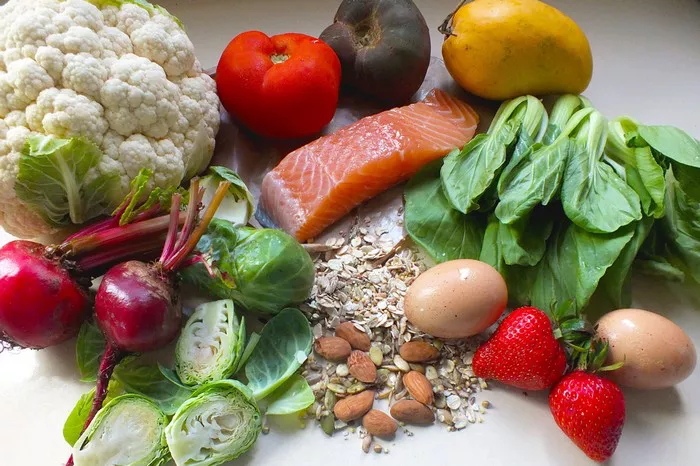In a world where dietary trends come and go, the concept of a perfect balanced diet remains a constant pursuit. It represents an ideal combination of foods that provides the body with all the necessary nutrients in the right proportions, promotes good health, supports energy levels, and helps prevent a plethora of diseases. However, defining this elusive “perfect” diet is far from straightforward, as it involves understanding the complex interplay of various nutrients, individual needs based on factors like age, gender, activity level, and health conditions, as well as cultural and personal preferences. This extensive essay will embark on a journey to explore what constitutes a perfect balanced diet, delving into its components, benefits, and how it can be tailored to suit different lifestyles.
Macronutrients: The Building Blocks
Carbohydrates Choosing Wisely for Sustained Energy: Carbohydrates are the body’s primary energy source, fueling everything from our daily activities to the most complex physiological processes. But not all carbs are created equal. They can be broadly categorized into two main types: simple and complex.
Simple carbohydrates, such as glucose, fructose, and sucrose, are made up of one or two sugar molecules. These are found in foods like table sugar, honey, fruit juices, and candies. While they provide quick energy, consuming excessive amounts can lead to rapid spikes in blood sugar levels, followed by equally sharp crashes. This rollercoaster effect can leave you feeling tired, hungry, and irritable soon after consumption.
On the other hand, complex carbohydrates consist of long chains of sugar molecules. They take longer to break down in the digestive system, providing a more gradual and sustained release of energy. Whole grains like brown rice, whole wheat bread, oats, and quinoa are excellent examples. Legumes, including beans, lentils, and chickpeas, also fall into this category, along with starchy vegetables like potatoes and sweet potatoes. Incorporating complex carbohydrates into a balanced diet is crucial as they often come bundled with fiber, vitamins, and minerals. For instance, a bowl of oatmeal in the morning not only supplies energy but also offers dietary fiber that aids digestion and helps maintain stable blood sugar levels throughout the day.
When planning a balanced diet, it’s advisable to make complex carbohydrates the foundation of your carb intake. Aim for about 45% to 65% of your total daily calories to come from carbohydrates, with the majority being from these complex sources. This way, you ensure a steady stream of energy without the negative impacts associated with excessive simple sugar consumption.
Breakfast: The Energizing Start
Breakfast truly is the most important meal of the day as it breaks the overnight fast and jump-starts your metabolism. A balanced breakfast should incorporate a combination of carbohydrates, proteins, and healthy fats.
For example, a bowl of whole wheat cereal with skim milk and berries is an excellent option. The whole wheat cereal provides complex carbohydrates for energy, the skim milk offers protein for muscle repair and maintenance, and the berries add natural sugars, fiber, and antioxidants. Another great choice could be a protein-packed smoothie made with Greek yogurt, a banana, spinach, and a tablespoon of nut butter. The Greek yogurt supplies protein, the banana provides carbohydrates and potassium, the spinach adds vitamins and minerals, and the nut butter contributes healthy fats. This combination keeps you full and satisfied, setting a positive tone for the rest of the day.
Lunch: The Midday Refuel
Lunch should be a balanced meal that replenishes energy levels and sustains you through the afternoon. A sandwich on whole wheat bread with lean turkey, lettuce, tomato, and a spread of avocado or hummus is a nutritious choice. The whole wheat bread offers complex carbohydrates, the lean turkey provides protein, and the avocado or hummus adds healthy fats.
Dinner: The Relaxing Recharge
Dinner is a time to unwind and refuel after a day’s activities, but it’s important not to overeat before going to bed. A balanced dinner might include a serving of baked or grilled fish like salmon, accompanied by a side of brown rice and a generous portion of steamed or roasted vegetables. The salmon provides protein and healthy fats, the brown rice offers complex carbohydrates, and the vegetables supply essential vitamins, minerals, and fiber.
Childhood and Adolescence: Laying the Foundation for Health
During childhood and adolescence, proper nutrition is vital for growth and development. Children need a diet rich in calcium for strong bones, iron for cognitive development and energy, and a variety of vitamins and minerals for overall health.
For younger children, offering a colorful plate with fruits, vegetables, whole grains, and lean proteins like chicken or fish is important. As they grow older and become more active, increasing protein intake and ensuring an adequate supply of healthy fats can support muscle growth and energy needs. It’s also crucial to limit sugary drinks and processed snacks and encourage healthy eating habits from an early age. School-age children, for example, can benefit from having a balanced lunchbox with a sandwich on whole wheat bread, a piece of fruit, and some yogurt or nuts.
In adulthood, diet plans may vary depending on factors such as activity level, weight management goals, and overall health. Sedentary adults should focus on portion control and choosing nutrient-dense foods to avoid weight gain. They might aim for a balanced diet with a slightly lower calorie intake, emphasizing complex carbohydrates, lean proteins, and healthy fats.
Conclusion
The perfect balanced diet is not a one-size-fits-all concept but rather a personalized approach that considers individual needs, preferences, and lifestyle. It involves a harmonious combination of macronutrients, micronutrients, phytonutrients, and hydration, supported by regular physical activity, adequate sleep, and effective stress management. By understanding the role of each component and making mindful choices, individuals can create a dietary pattern that promotes health, prevents disease, and supports a vibrant, active life.
Related Topics:



























